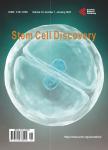Matrigel modulates a stem cell phenotype and promotes tumor formation in a mantle cell lymphoma cell line
Matrigel modulates a stem cell phenotype and promotes tumor formation in a mantle cell lymphoma cell line作者机构:Department of Cell Biology Genetics and Anatomy University of Nebraska Medical Center Omaha USA
出 版 物:《Stem Cell Discovery》 (干细胞探索(英文))
年 卷 期:2013年第3卷第3期
页 面:167-179页
学科分类:1002[医学-临床医学] 100214[医学-肿瘤学] 10[医学]
主 题:Mantle Cell Lymphoma Side Population Tumor-Initiating Cells Microenvironment
摘 要:Tumors may be maintained by subpopulations of cells possessing stem cell-like properties. We evaluated the stem cell-like and tumor-forming properties of side population (SP) and CD133+/ CD44+ cells in Granta 519, a human mantle cell lymphoma cell line. The in-vitro Cobblestone Area Forming Cell (CAFC) assay, designed to detect stem and progenitor cells, revealed that SP cells contained the greatest proportion of stem cell-like cells. The addition of Matrigel to CAFC assays of SP and non-SP cells both increased their respective stem cell frequencies in comparison to those cultures without Matrigel, and additionally resulted in observed stem cell frequencies which were the same between SP and non-SP cells. Contrary, Matrigel decreased the stem cell frequencies of CD133+/CD44+ or CD133-/CD44- cells. In-vivo assays revealed tumor formation from Matrigel-mixed SP and non-SP cells, and in one instance, occurred with as few as one Matrigel-mixed SP cell. Vehicle-mixed injections of SP and non-SP tumor cells resulted in tumor formation from SP cells only. Tumor formation did not occur from Matrigel nor hyaluronan (cellular substrate for CD44-expressing cells)-mixed populations of CD133+/CD44+ or CD133-/CD44- cells. These data demonstrate that Matrigel modulates a stem cell phenotype and promotes tumor formation from SP and non-SP cells. The tumor micro-environmental niche and tumor cell to micro-environmental interactions may be important future targets for novel chemotherapeutic agents.



